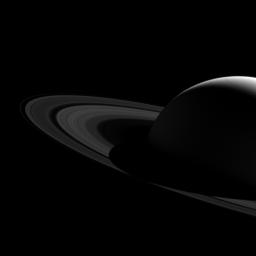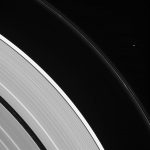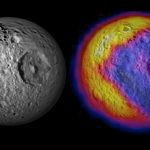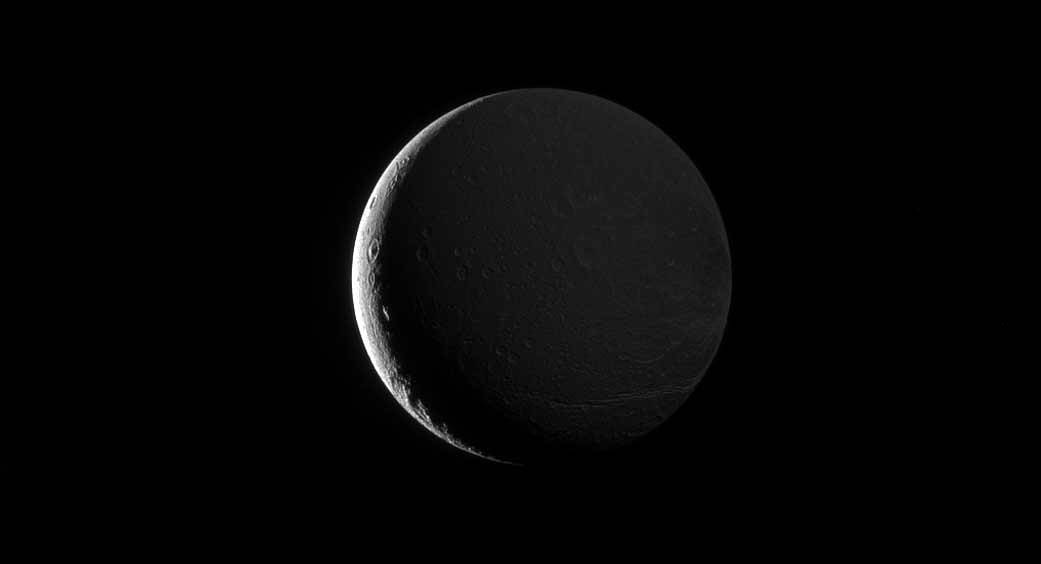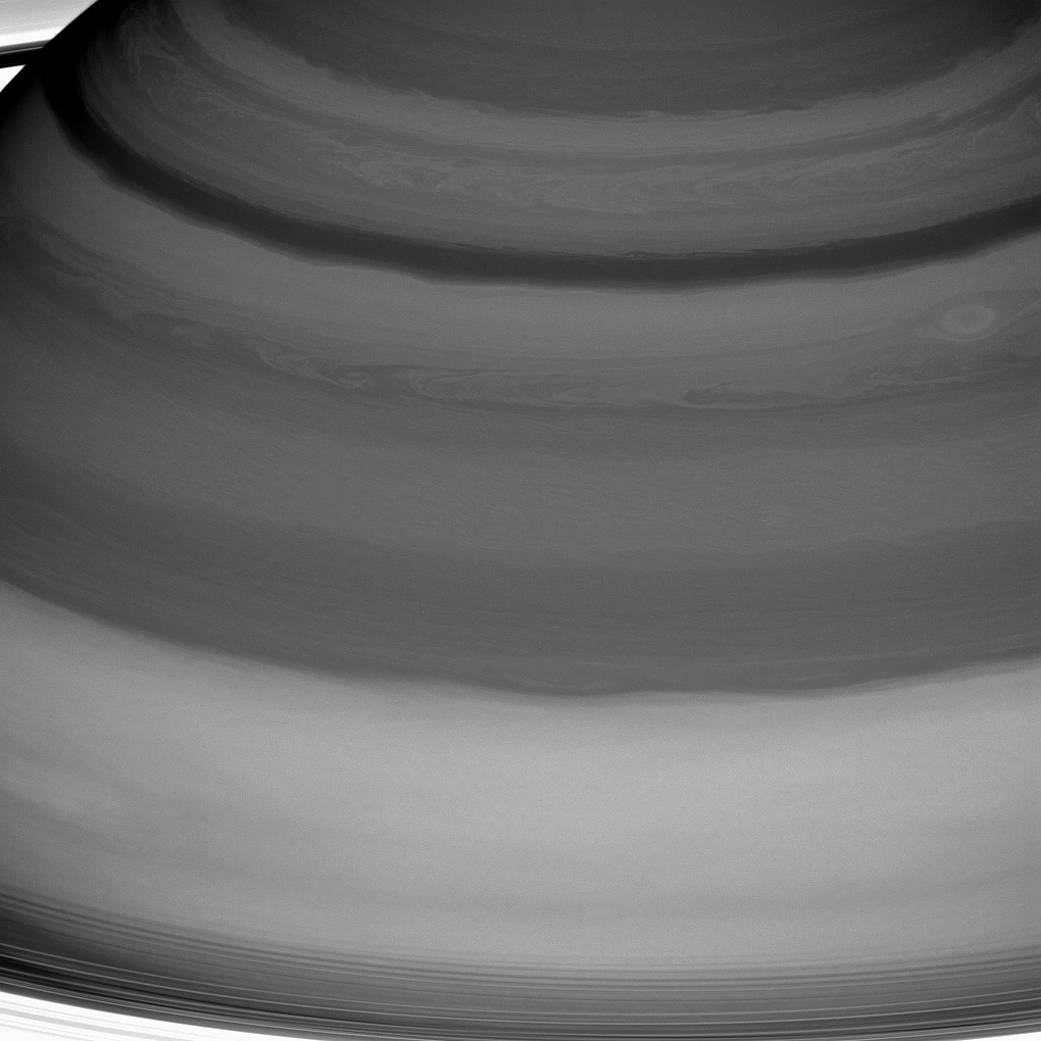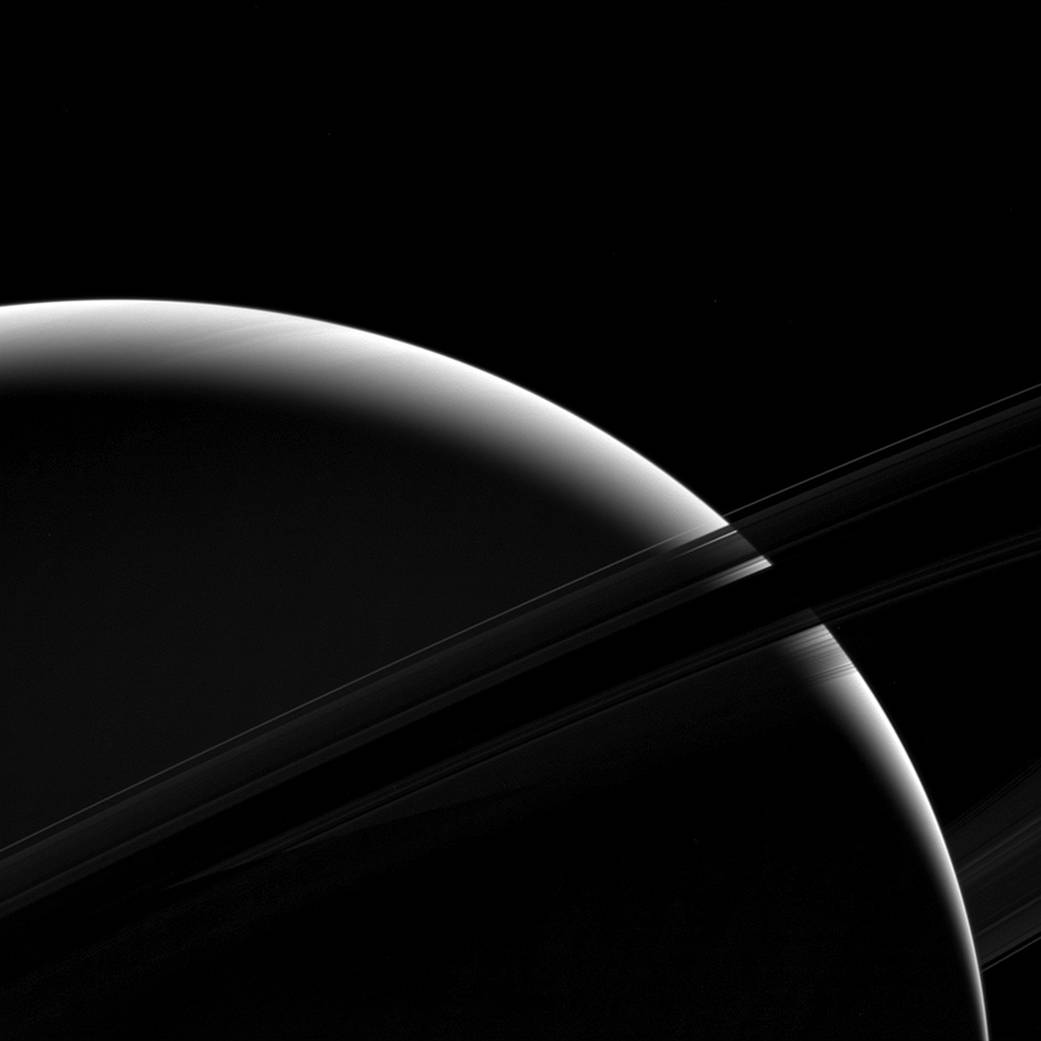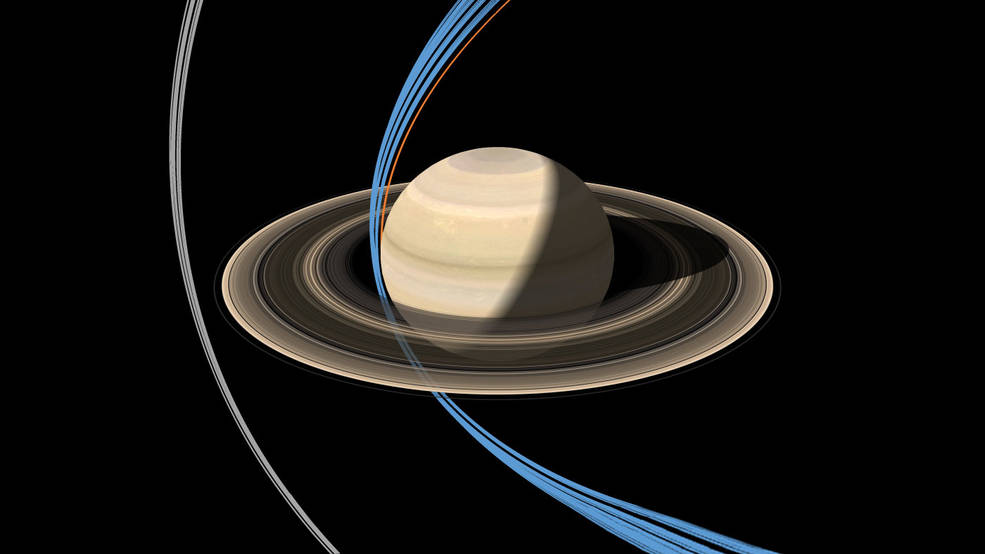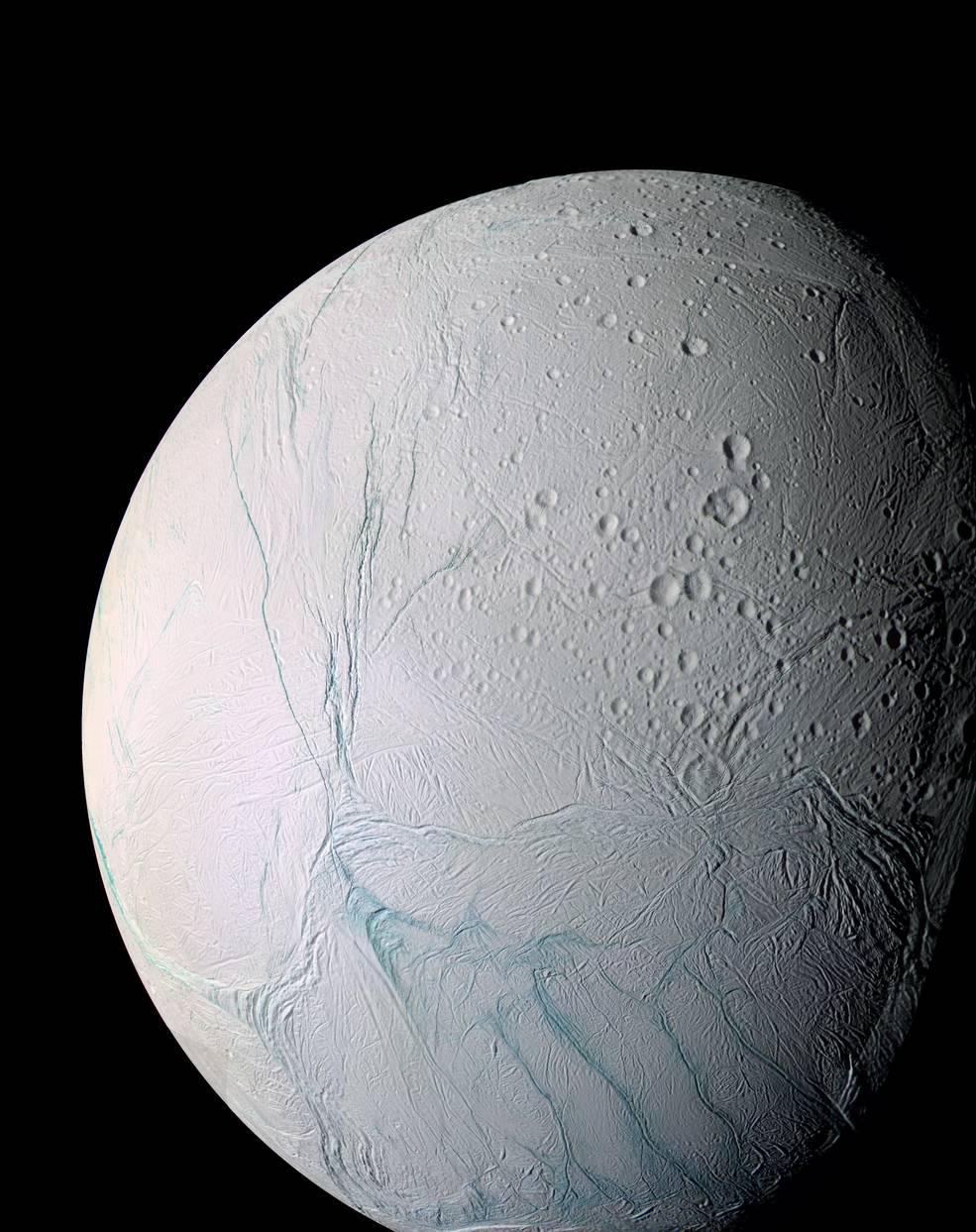オリジナル記事:In Daylight on the Night Side
NASA’s Cassini spacecraft looks down at the rings of Saturn from above the planet’s nightside. The darkened globe of Saturn is seen here at lower right, along with the shadow it casts across the rings.
The image shows that even on the planet’s night side, the rings remain in sunlight, apart from the portion that lies within Saturn’s shadow. The rings also reflect sunlight back onto the night side of the planet, making it appear brighter than it would otherwise appear.
Saturn’s small moon Prometheus (53 miles or 86 kilometers across) is faintly visible as a speck near upper left. The shadow of Saturn was once long enough to stretch to the orbit of Prometheus. But as northern summer solstice approaches, Saturn’s shadow no longer reaches that far (see PIA20498). So Prometheus will not move into the darkness of the planet’s shadow until the march of the seasons again causes the shadow to lengthen.
This view looks toward the sunlit side of the rings from about 41 degrees above the ring plane. The image was taken in visible light with the Cassini spacecraft wide-angle camera on Aug. 14, 2016.
The view was obtained at a distance of approximately 870,000 miles (1.4 million kilometers) from Saturn and at a Sun-Saturn-spacecraft, or phase, angle of 87 degrees. Image scale is 53 miles (86 kilometers) per pixel. Prometheus has been brightened by a factor of two to enhance its visibility.
The Cassini mission is a cooperative project of NASA, ESA (the European Space Agency) and the Italian Space Agency. The Jet Propulsion Laboratory, a division of the California Institute of Technology in Pasadena, manages the mission for NASA’s Science Mission Directorate, Washington. The Cassini orbiter and its two onboard cameras were designed, developed and assembled at JPL. The imaging operations center is based at the Space Science Institute in Boulder, Colorado.
For more information about the Cassini-Huygens mission visit http://saturn.jpl.nasa.gov and http://www.nasa.gov/cassini. The Cassini imaging team homepage is at http://ciclops.org.
Image Credit: NASA/JPL-Caltech/Space Science Institute
Last Updated: Oct. 11, 2016
Editor: Tony Greicius
夜間に陽の光
NASAの探査機カッシーニが土星の夜側の上方から土星の環を見下ろしています。右下に見える土星の環を横切る暗いところが土星の影です。
この画像は土星の夜側のものですが、土星から離れている土星の環では日光が残っていることを示しています。土星の環は太陽光を反射するので、その反射を受ける土星の夜側はほかの部分よりも明るく見えます。
土星の小さな衛星であるプロメテウス(直径53マイル/86キロ)は、画像の左上にかすかに見ることができます。土星の影は、プロメテウスの軌道に十分届く長さでした。しかし、土星の北半球は夏至になっていて土星の影はもはやそこまでは届きません(PIA20498を参照)。季節の巡り再び土星の影を長くするまではプロメテウスは土星の影の闇に入ることはありません。
この画像は、土星の環の平面の上方約41°から太陽に照らされた側を見ています。2016年8月14日にカッシーニ探査機搭載の広角カメラで可視光で撮影されました。
撮影地点は、土星から約87万マイル(140万キロ)の距離で、太陽と土星と探査機の位相が87°の角度です。画像解像度はピクセルあたり53マイル(86キロ)です。プロメテウスは見やすくするために2倍明るく画像処理を施しています。
カッシーニのミッションは、NASA、ESA(欧州宇宙機関)とイタリア宇宙機関の共同プロジェクトです。パサデナのカリフォルニア工科大学の部門のジェット推進研究所は、ワシントンのNASAの科学ミッション本部のためにミッションを管理します。カッシーニ探査機と搭載されている2つのカメラは、設計、開発および組み立てをJPLで担当しました。イメージングオペレーションセンターはコロラド州ボールダーの宇宙科学研究所にあります。
訳者注
記事中に出てくるPIA20498という画像は、2015年1月16日に撮影された画像です。
オリジナル高解像度画像はこちら
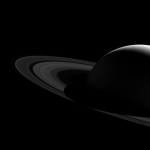
画像クリックで拡大表示(1020 × 1020)します。

